The snow festival first began in 1950,
when
local middle and high school students created six snow sculptures in
Odori Park.
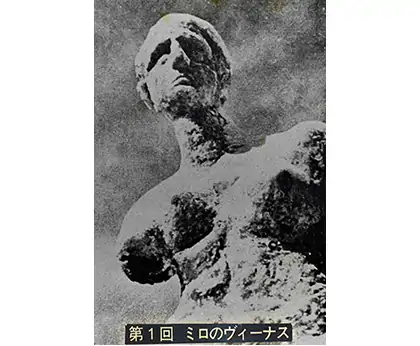 Venus de Milo
Venus de Milo
Six snow sculptures made by students from three high schools and two junior high schools in the city were displayed in Odori 7-chome Square, which used to be a snow dumping ground for citizens. There was also a square dance, a singing contest, and a dog race on a course specially set up on the sidewalk. *The poster says that the event will be held on Feb. 18 and 19, but in fact, it was only held on the 18th.
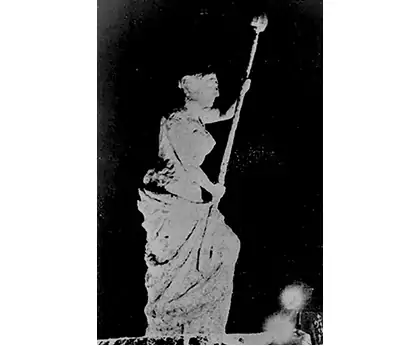 Venus with a Bonfire
Venus with a Bonfire
The event was recognized as an annual event by the city. Fuji Girls' School joined in and made five sculptures. Fushimi High School's "Venus with a Bonfire" was a hot HOMEic as the tip of the bonfire lit up at night. On the 27th, a dance was held through the snow sculptures.
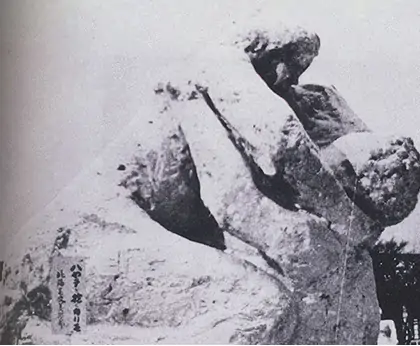 Karimo holds Hayate
Karimo holds Hayate
The main site was changed to Odori 4-chome in consideration of convenience of transportation. Works from six schools, including Sapporo Minami High School and Koryo Junior High School, was created in Nishi 4-chome.
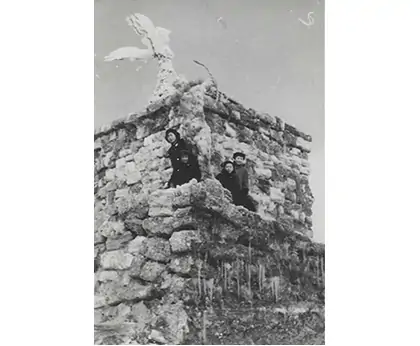 Ascension
Ascension
Fushimi High School's "Ascension," the first of the giant snow sculptures, stands 15 meters tall. A total of 1,000 people participated in making the snow sculptures. Voluntary snow sculptures are being displayed in front of school gates and in schoolyards of elementary schools around the city.
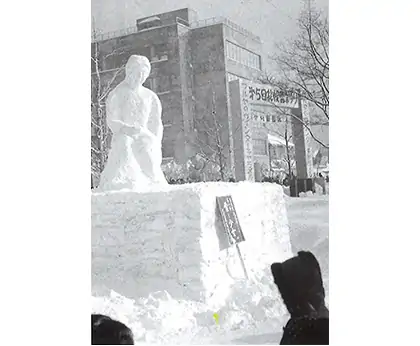 "Snow and a Girl" by Sapporo Higashi High School
"Snow and a Girl" by Sapporo Higashi High School
During the festival, there was a fierce snow storm, and many of the snow sculptures were damaged or buried in heavy snow.
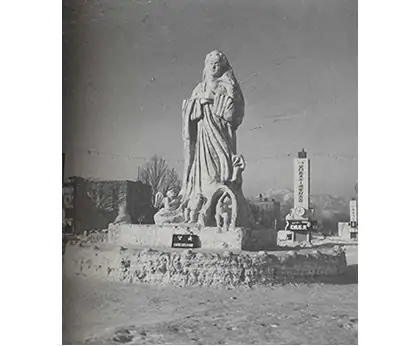 Glory
Glory
Japanese Self-Defense Forces participate in snow sculpture making for the first time. The 10-meter high sculpture of Virgin Mary, "Glory," was one of the prominent highlights.
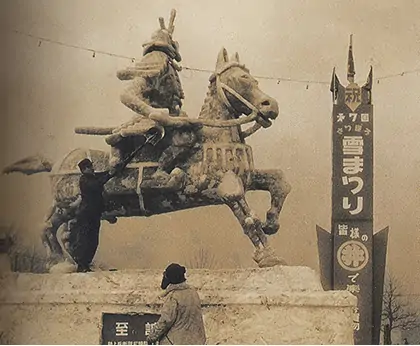 Sincerity
Sincerity
The snowball fight is back. Under the music of the Battleship March, 200 members of the Japanese Self-Defense Forces participated in the event, wearing hachi-maki (Japanese headbands) and straw sandals, to the great enthusiasm of the crowd.
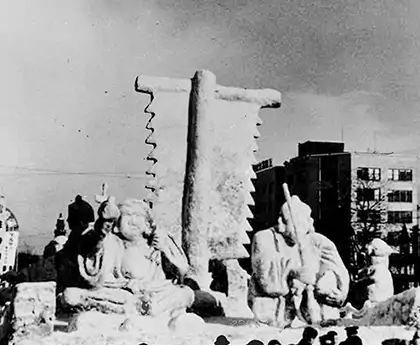 Great Snow Sculpture of Seven Lucky Gods
Great Snow Sculpture of Seven Lucky Gods
The venue was expanded to include Odori West 3-chome to 6-chome. The snowball fight will be held for the last time this year after an excited spectator fell down due to the thrilling battle between the Japanese Self-Defense Forces and the snowball fighters.
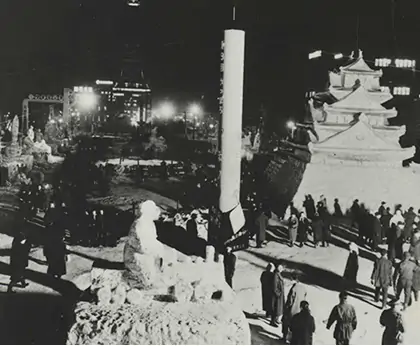 Snow-White Castle
Snow-White Castle
Helping to liven up the Hokkaido Expo. The venue expands to Odori West 8-chome. Satirical sculptures reflecting the current state of the world begin to stand out.
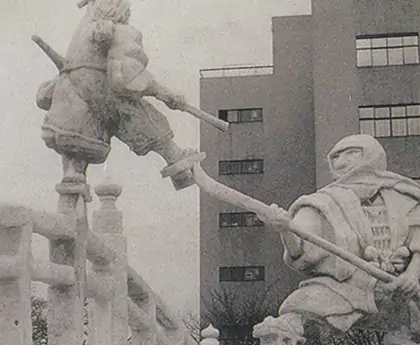 "Gojo Bridge" and "Ushiwakamaru and Benkei" Sculptures
"Gojo Bridge" and "Ushiwakamaru and Benkei" Sculptures
There were 64 snow sculptures, doubling the number of previous years. TV and other mass media introduced the event nationwide. The number of the Japanese Self-Defense Forces' large snow sculptures increased to three. Due to the unprecedented snow shortage, the snow for the sculptures had to be transported from Nakayama Pass by the JSDF.
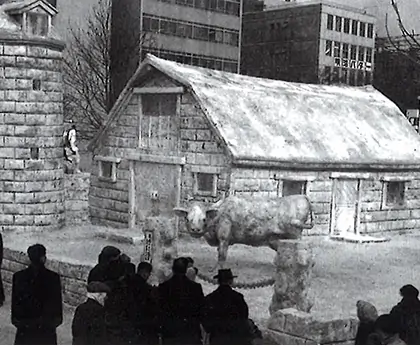 Landscape with silo
Landscape with silo
The venue expanded from 3-chome to 9-chome, and the number of snow sculptures increased to 87. The Sapporo Snow Festival became more famous and attracted people from all over Japan.
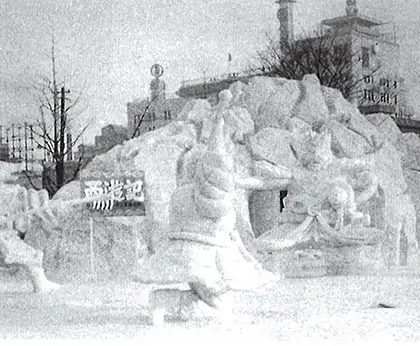 The Monkey King
The Monkey King
Skiers and snow festival groups from the Japanese mainland start to visit. The number of lights and banners increased, adding more glamour to the venue at night. As the snow shortage in the city became more serious, a large amount of snow had to be transported from Nakayama Pass.
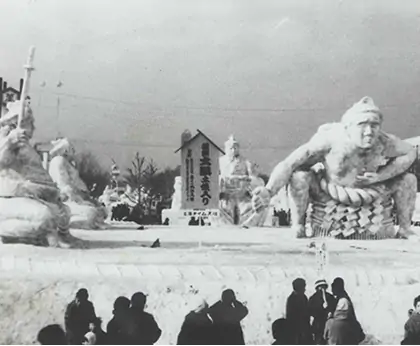 Sumo Wrestler Taiho's Ring-Entering Ceremony
Sumo Wrestler Taiho's Ring-Entering Ceremony
Even Yokozuna Taiho could not beat the heat. Sweating snow sculptures. There were two large snow sculptures: one by the Japanese Self-Defense Forces, and the other was a collaboration between the JSDF, Sapporo Technical High School, and Gakugei University.
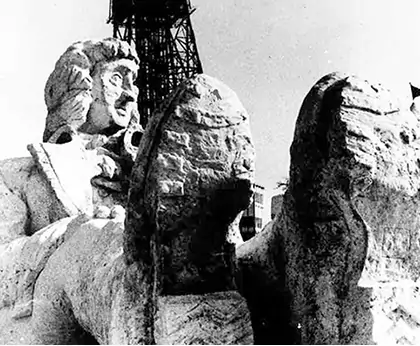 Gulliver's Travels
Gulliver's Travels
A snow festival was held at the Japanese Self-Defense Forces Makomanai Garrison. This was the beginning of the development of the second venue. A security headquarters was set up at Odori 5-chome to deal with lost and found items. TV stations invited TV personalities and held on-location shoots and shows. The images were broadcasted to TV viewers all over Japan.
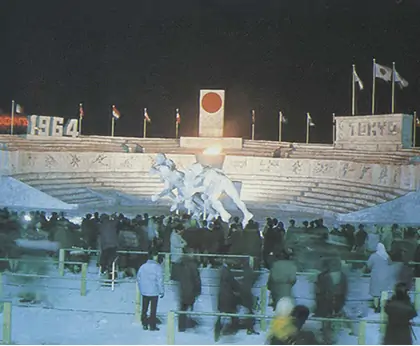 Olympic Stadium
Olympic Stadium
From Tokyo to Sapporo, the Olympic Games are in full swing. This is the year that the Tokyo Olympics was held and the year that the Sapporo City Council decided to host the Winter Olympics.
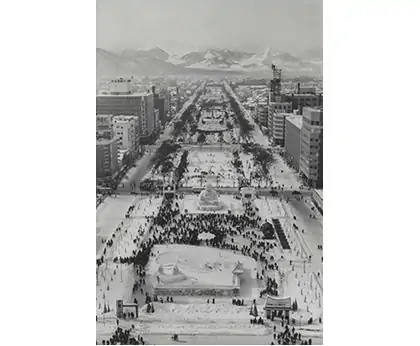
Makomanai was officially designated as the second venue, and became a place where families and other visitors could touch and play with snow.
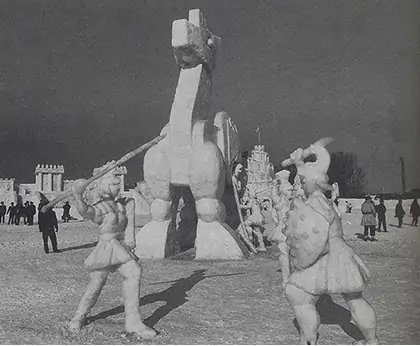 "Trojan Horse" Reminiscent of Helen of Troy
"Trojan Horse" Reminiscent of Helen of Troy
The exhibition is extended to four days. Odori West-8 and 9-Chome is turned into a citizens' plaza.
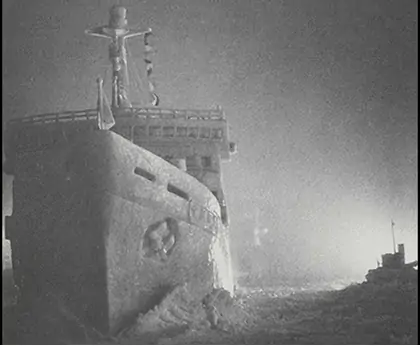 The world's largest passenger ship, the Towada Maru
The world's largest passenger ship, the Towada Maru
The theme is "Let's make the two major international events, the Sapporo Winter Olympics and the Osaka Expo, a success. With the decision to hold the Winter Olympics in Sapporo, the city will shine brightly in the international community.
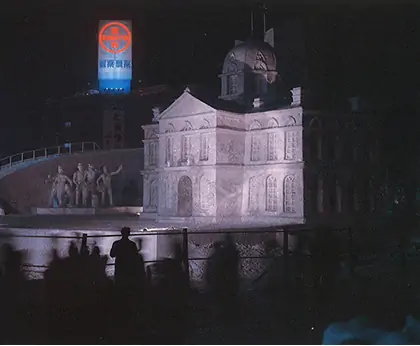 Hokkaido Pioneer Office Building
Hokkaido Pioneer Office Building
The Associated Press broadcasted the Sapporo Snow Festival to the world, and an American monthly magazine also ran a feature on the festival.
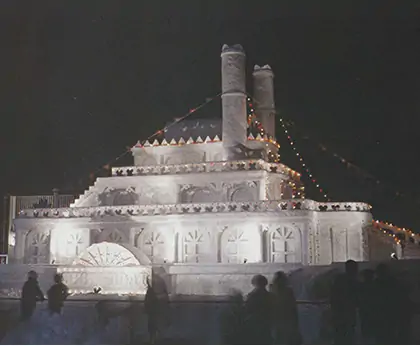 Showboat
Showboat
The theme for the big snow sculpture was decided by the public and nine were selected. There was no snow until mid-January, so snow had to be transported from Iwamizawa.
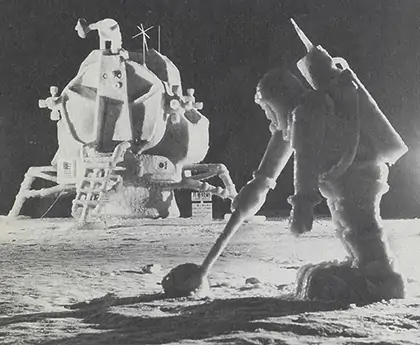 Stand on the Moon of Mankind
Stand on the Moon of Mankind
The private sector began providing more cooperation through sponsorships and services for visitors.
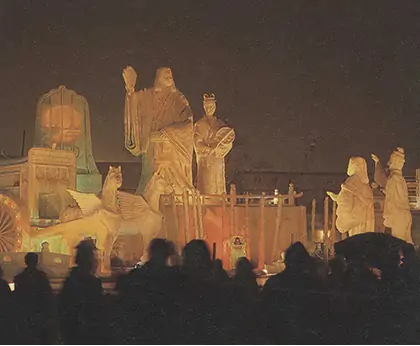 Kaguya Hime's "Taketori Monogatari"
Kaguya Hime's "Taketori Monogatari"
The atmosphere was in full Olympics swing. At the ceremony, the people chosen as Miss Suzuran performed the fire-starting ceremony in the ancient Olympian style.
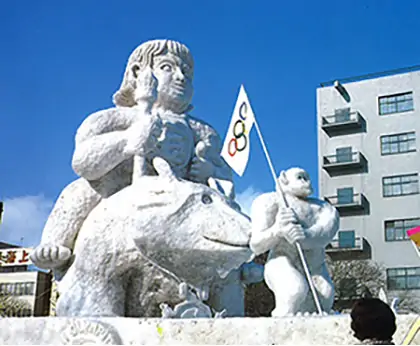 Kintaro holds up the Olympic torch and the Olympic flag.
Kintaro holds up the Olympic torch and the Olympic flag.
Giant snow sculptures also appeared at the Winter Olympics site. The counting method of the number of spectators was changed.
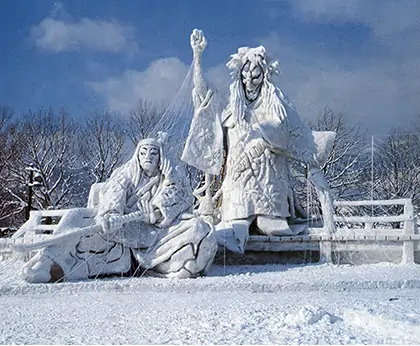 Earth Spider
Earth Spider
The Feb. 1-5 schedule is established. The price of goods at the stalls will also increase due to the rising costs of oil and inflation caused by the oil shock.
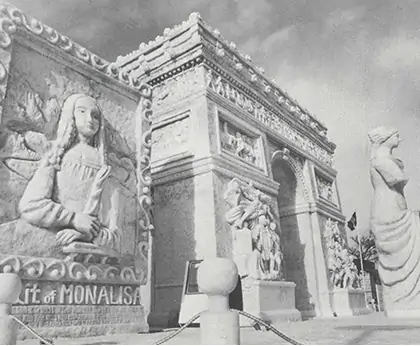 Mona Lisa and the Arc de Triomphe
Mona Lisa and the Arc de Triomphe
Fuel for snow transportation is in short supply due to the oil crisis. Snow sculptures were made using oil drums as cores. International Snow Sculpture Competition started at 2-chome Square.
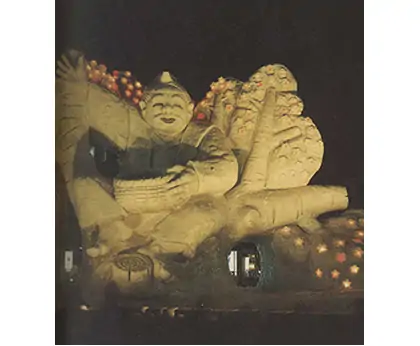 The Man Who Made Flowers Bloom
The Man Who Made Flowers Bloom
A special plaza was set up for tourists to experience making snow sculptures, turning out to be a great success. The citizens' plaza expanded to include 8th to 10th streets. The Snow Queen was elected on the eve of the festival.
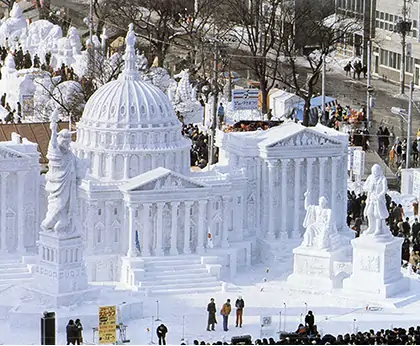 American Square
American Square
ny snow sculptures commemorated the bicentennial of the founding of the United States. The U.S. Minister to Japan presented a letter of appreciation to the Commander of the 11th Division of the Japanese Ground Self-Defense Force.
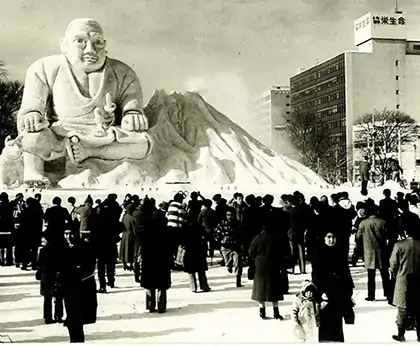 Mr. Saigo and Sakurajima
Mr. Saigo and Sakurajima
Sapporo Mode Show held for the first time. Representative fashions and models from eight countries, including Sweden, performed.
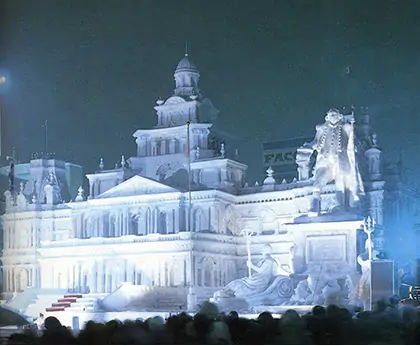 Sydney Town Hall
Sydney Town Hall
From this year, the unified theme is "A World of Pure White Dreams." Due to a serious shortage of snow, it was difficult to build the snow sculptures and forced the venue to become a one-way street.
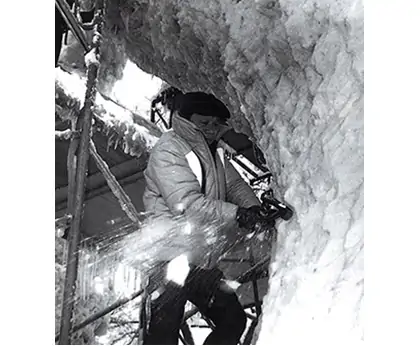 Mr. Okamoto joins in the snow sculpture making.
Mr. Okamoto joins in the snow sculpture making.
The world-famous artist Taro Okamoto was commissioned to design a snow sculpture and created a 12-meter high "Snow Goddess" in the West 9-Chome Square.
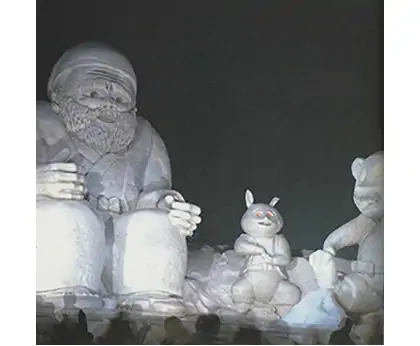 Kachikachi-yama (Mt. Clack-Clack)
Kachikachi-yama (Mt. Clack-Clack)
Oil price hike hits snow transportation. A daring way to make snow sculptures while saving on heating. Foreign tourists were also noticeable.
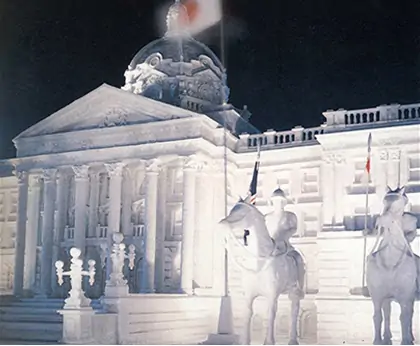 Alberta Legislature Building
Alberta Legislature Building
From this year, the schedule rule is changed to make the last day of the festival land on a Sunday. The Susukino Tourist Association held its first "Susukino Festival".
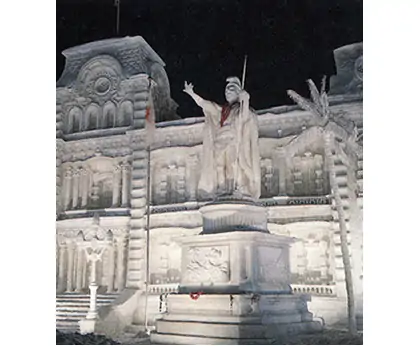 Iolani Palace and King Kamehameha the Great
Iolani Palace and King Kamehameha the Great
The first English pamphlet was produced as a guidebook for foreign tourists.
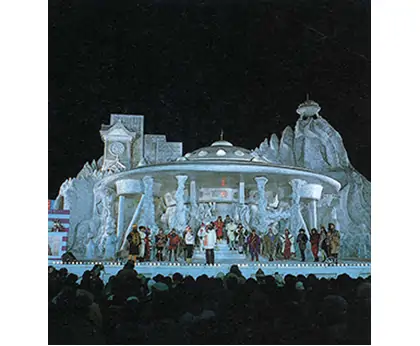 UFO - Messages from Space
UFO - Messages from Space
The Susukino Festival officially becomes the third site of the Snow Festival with its pristine ice sculptures as the main attractions. Chefs from restaurants and hotels, chisels in hand, worked hard to create their ice sculpture masterpieces.
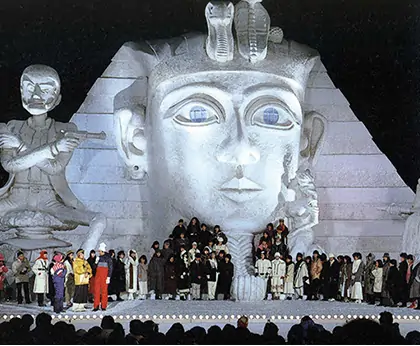 King Tutankhamun and Lupin III
King Tutankhamun and Lupin III
In commemoration of the 25th anniversary of the sister city relationship between Sapporo and Portland, the "Portland Pioneer Courthouse" was created with the help of international students.
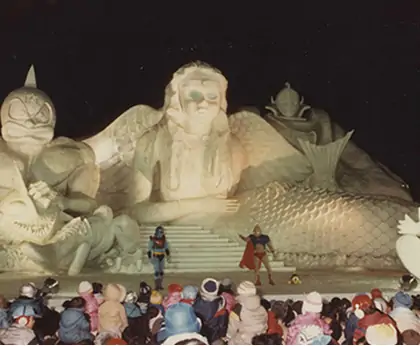 Kinnikuman
Kinnikuman
The city was hit by a typhoon-like W low pressure system. In commemoration of the fifth anniversary of the sister city relationship between Sapporo and Shenyang (China), "Fuling Long En Gate" was created. In a call for ideas for snow sculptures for children, a frilled lizard was the most popular.
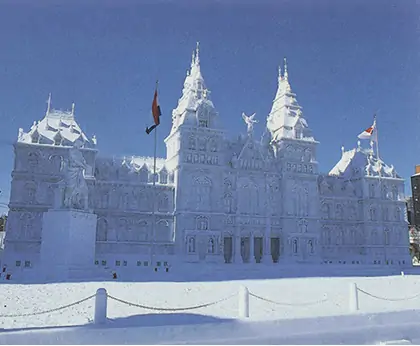 Dutch National Museum
Dutch National Museum
The poster won the Japan Printing Industry Chairman's Award. The horse-drawn sleigh was popular with children at the Makomanai site, but the feature was cancelled the following year after a sleigh overturned during a ride and injuring some people. The finale of the festival is a jenka (a traditional dance) performed by about 400 people.
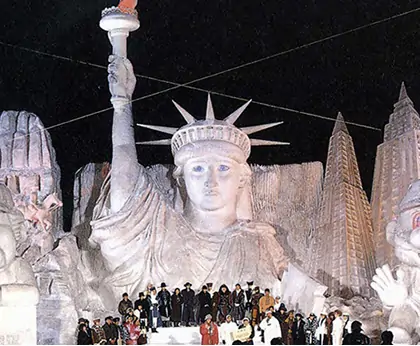 Ultra Family Computer Land
Ultra Family Computer Land
Period extended to 7 days. Travel agents in Hong Kong, Taiwan, Singapore, etc. launched a campaign for the Snow Festival. Warm air hit the area during the festival. Some works of the International Snow Sculpture Competition were completely destroyed.
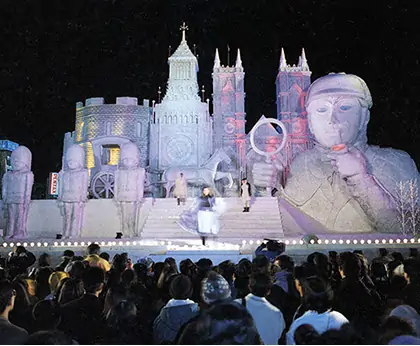 Sherlock Holmes
Sherlock Holmes
365 teams applied for the Civic Plaza. Participation is highly competitive. It is also popular for citizens to participate in the making of the large and medium snow sculptures.
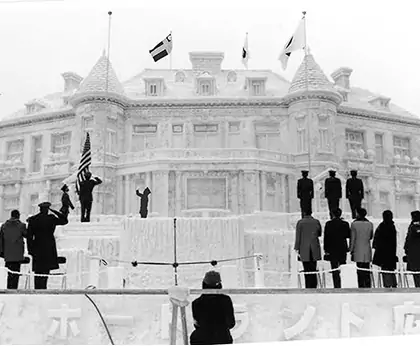 Portland City Hall
Portland City Hall
The Makomanai site opened at night to celebrate the 40th anniversary. The mercury lamp lights basked the large snow sculptures, like the Notre Dame Cathedral, look magical. Commemorative pins are available.
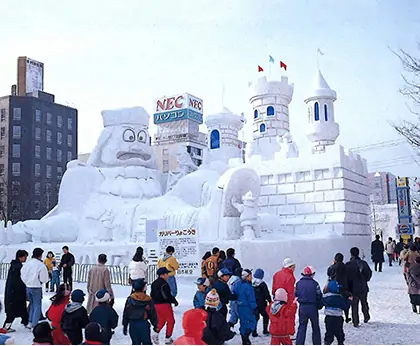 Gulliver's Travels
Gulliver's Travels
Nakajima Park became the fourth site for citizens to casually participate in the festival. The Makomanai venue was opened to the public one day before the exhibition.
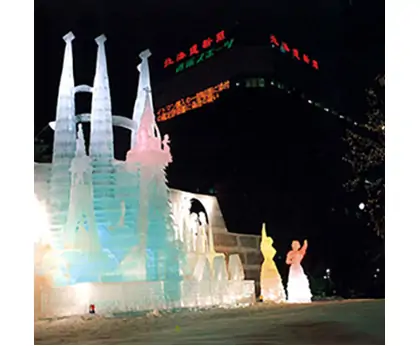 Sagrada Família and National Art Museum of Catalonia in
Spain
Sagrada Família and National Art Museum of Catalonia in
Spain
The lighting ceremony for the Sapporo Universiade Winter Games was held in front of the snow sculptures. A record 362 snow sculptures was displayed at the four venues.
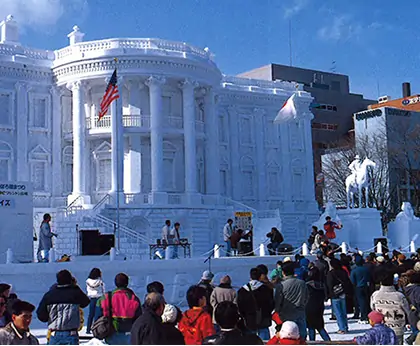 The White House
The White House
The Asia Pacific Tourism Summit was held just before the event, spreading the name of Sapporo and the Snow Festival to the world.
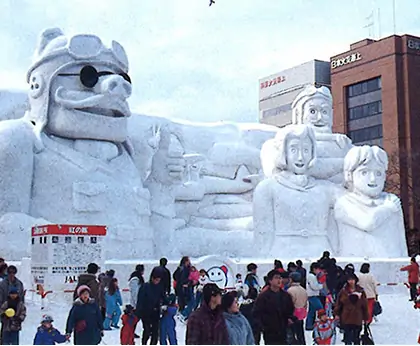 Porco Rosso
Porco Rosso
Nakajima Park site discontinued. Addition of a Citizens' Plaza at Nishi 12-Chome.
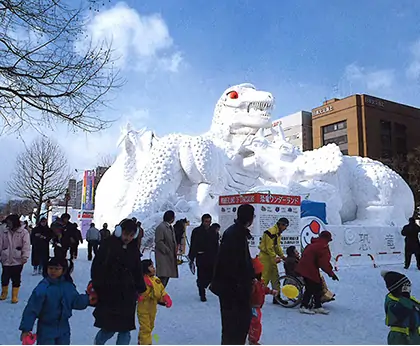 Dinosaur Wonderland
Dinosaur Wonderland
20 teams participated in the international snow sculpture competition. The lottery ratio for the Citizens' Plaza is 4.6 times.
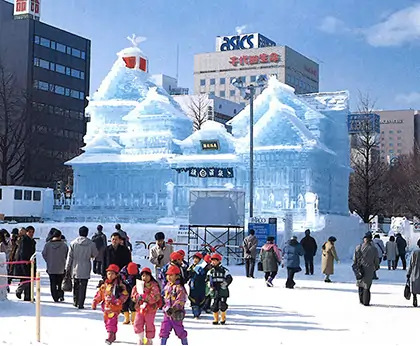 Dogo Hot Springs Main Building
Dogo Hot Springs Main Building
Collecting donations for the Great Hanshin-Awaji Earthquake. Dancers from the YOSAKOI Soran Festival appear on the stage of the big snow sculpture.
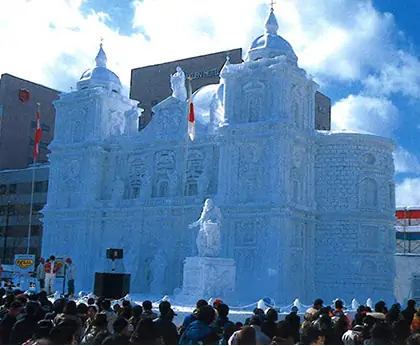 Salzburg Cathedral
Salzburg Cathedral
This year, the organizers started to send out information over the Internet. We invited elementary, junior high, and high school students from around Japan and abroad to submit their ideas for snow sculptures of citizens.
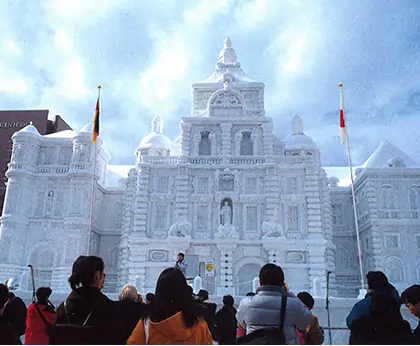 National Museum
National Museum
The Virtual Snow Festival, where children share their ideas on the Internet, was in full swing. More than 200 entries were received from 20 students from 13 schools in and outside of Hokkaido, and the detailed designs were decided by e-mail.
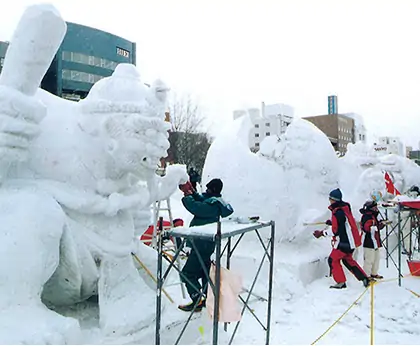 The making process for the International Snow Sculpture
Competition.
The making process for the International Snow Sculpture
Competition.
Snow sculptures of the Nagano Winter Olympics and the World Cup are lined up. Tourists from Taiwan flocked to enjoy the festival.
The Sapporo Snow Sculpture Production Committee was established in preparation for the reduced cooperation of the Japanese Ground Self-Defense Force. A mammoth parent and young were created at Odori Nishi 4-Chome.
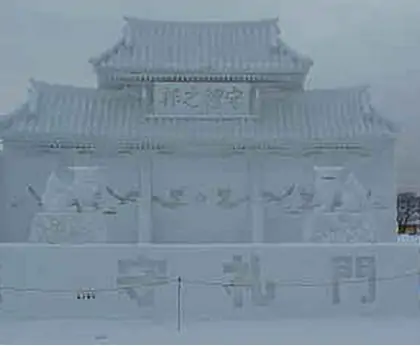 Shurijo Castle Shoureimon
Shurijo Castle Shoureimon
The number of applications for citizen volunteers exceeded the capacity. Volunteers guided visitors and helped lost children.
A CD of the image song "In Your Heart" was created. The first fireworks display in two years at the Makomanai site. A wedding ceremony was held in the snow at the International Plaza.
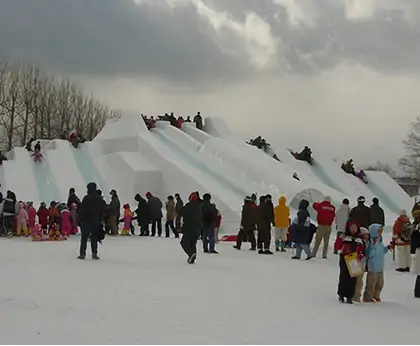 Slide at Makomanai site.
Slide at Makomanai site.
NPOs and citizen volunteers formed the Sapporo City Snow Sculpture Making Team. The group begins work on a large snow sculpture at the Odori site. In response to the simultaneous terrorist attacks, the Makomanai site implements a baggage check.
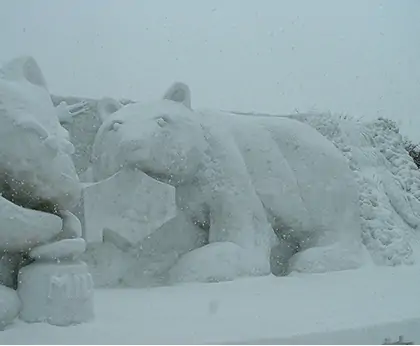 Biting the entire Hokkaido.
Biting the entire Hokkaido.
In commemoration of the 25th anniversary of the signing of the Japan-China Peace and Friendship Treaty, a Chinese TV station puts together a project for a major special program focusing on the Sapporo Snow Festival. Money left by tourists accumulates in front of the snow sculpture of the Great Buddha Nirvana, surprising the officials.
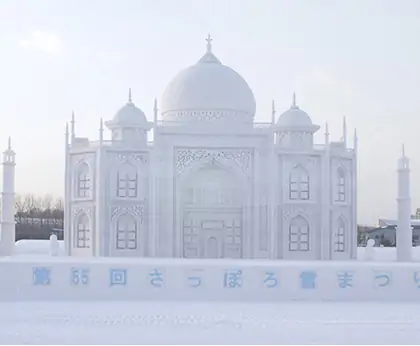 India, the Land of Enchantment - Taj Mahal
India, the Land of Enchantment - Taj Mahal
During this period, the call center started providing inquiry services in English. At the Makomanai site, metal detectors was introduced as a precaution against terrorism.
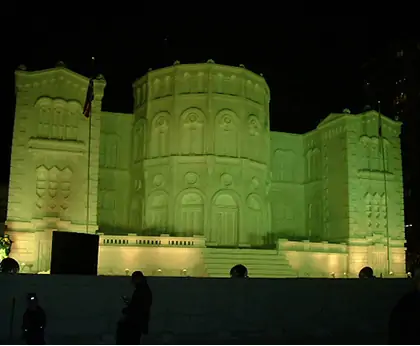 The Norwegian Parliament building
The Norwegian Parliament building
The end of the 40-year history of the Makomanai site.
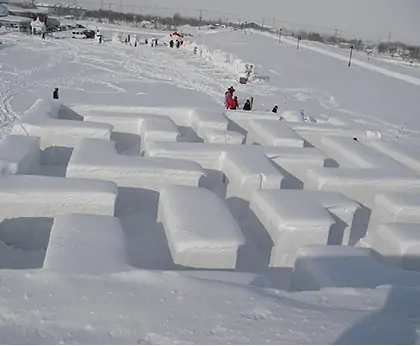 Satorando Site and Snow Maze.
Satorando Site and Snow Maze.
The second site was changed from Makomanai to Satorando. Long line up for the slide.
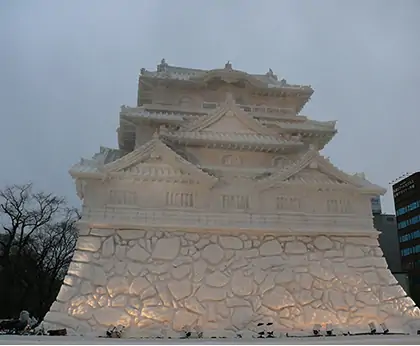 National Treasure Hikone Castle © Hokkaido Television
Broadcasting
National Treasure Hikone Castle © Hokkaido Television
Broadcasting
Snow transportation from mountainous areas such as Nakayama Pass and Hoheikyo Dam due to low snowfall within the city. A mobile website was created and started providing information such as waiting times. A large tent was set up at 6-Chome and a "Hokkaido Food Plaza" was opened.
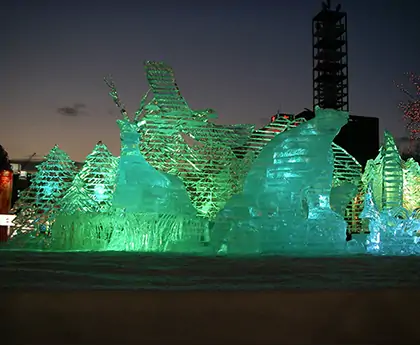 Shiretoko Forest and Friends © Hokkaido Shimbun Press
Shiretoko Forest and Friends © Hokkaido Shimbun Press
Low snowfall and high oil prices put a strain on transportation costs. 3,550 parking spaces were set up at the Satoland site. A three-hour long line for the popular slide at the Satoland site.
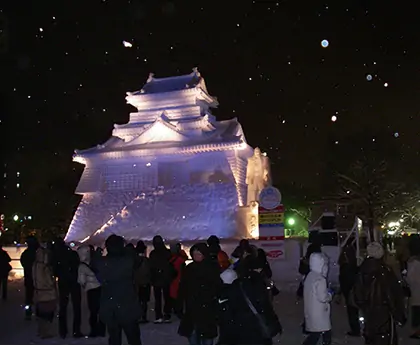 Hamamatsu Castle © Hokkaido Television Broadcasting
Hamamatsu Castle © Hokkaido Television Broadcasting
The second site was changed to Tsudome. Started selling goods online. "Sapporo Snow Festival Anniversary Festa" in Sapporo Dome is held as a commemorative event, while the "Candle Night" festivities were held at the Odori site.
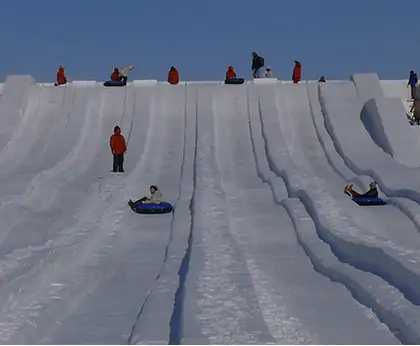 Slide at the Tsudome site.
Slide at the Tsudome site.
Virtual singer "Hatsune Miku" cheers. Thailand wins the International Snow Sculpture Competition for the third year in a row.
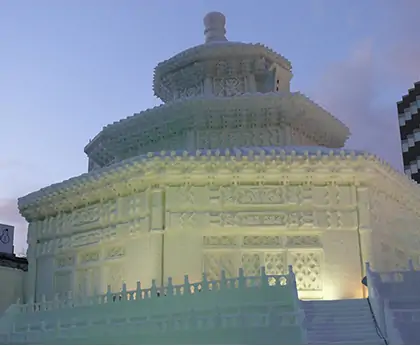 Temple of Heaven (China) © HBC Hokkaido Broadcasting Co.
Temple of Heaven (China) © HBC Hokkaido Broadcasting Co.
Tourists from China and Taiwan are coming one after another during the Chinese New Year. After the Snow Festival, the snow from the sculptures were used at "Odori Park Waku Waku Winterland", where visitors could enjoy skiing and tube slides.
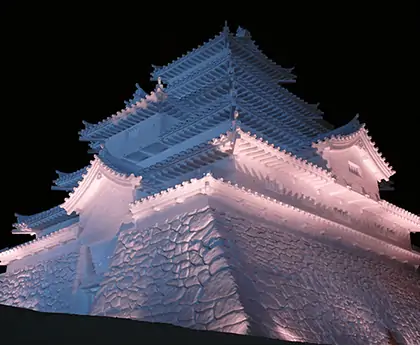 Tsuruga Castle, Aizu © HTB
Tsuruga Castle, Aizu © HTB
The competition rate was the highest ever. However, some snow sculptures collapsed due to warm weather. Since then, the snow sculpture management system was reviewed and safety measures were thoroughly implemented. Many snow sculptures and events were held to pray for the recovery from the Great East Japan Earthquake.
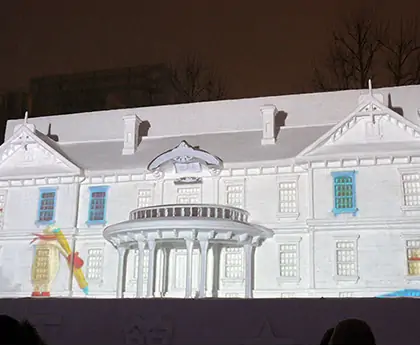 Hoheikan (building)
Hoheikan (building)
Projection mapping was carried out for the first time using the snow sculpture of Hoheikan building as a screen. The event was cancelled in the middle of the exhibition period for safety reasons due to a larger-than-expected crowd.
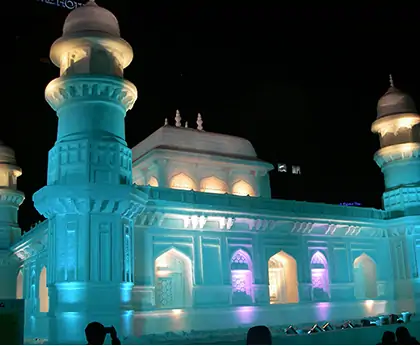 Tomb Itimad-Ud-Daulah (India) © HTB
Tomb Itimad-Ud-Daulah (India) © HTB
84 citizen snow sculptures. The lottery ratio was 8.9 times. Priority was given to securing aisles to avoid congestion.
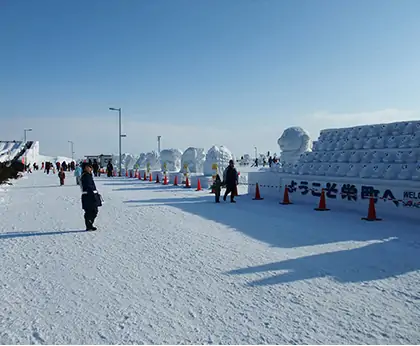 Tsudome site.
Tsudome site.
The Susukino site was renamed "Susukino Ice World 2015" to familiarize with foreigners. U.S. Ambassador to Japan, Caroline Kennedy, visited Odori 8-Chome. The number of large snow sculptures made by the Japanese Self-Defense Forces was reduced from 3 to 2.
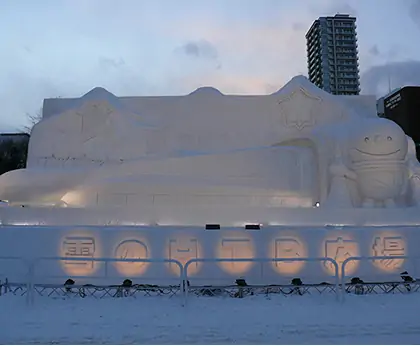 March 26, 2016 Hokkaido Shinkansen opens! © HTB
March 26, 2016 Hokkaido Shinkansen opens! © HTB
A full-sized Shinkansen train appears as a snow sculpture. The amount of snowfall was half of a normal year. Snow had to be brought in to the city from Iwamizawa due to lack of snow. Tsudome extended for one week.
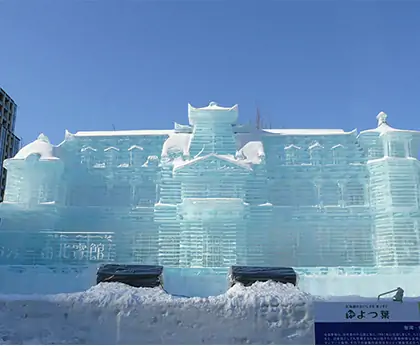 Taipei Guest House © Mainichi Newspapers
Taipei Guest House © Mainichi Newspapers
Tsudome site one week ahead of schedule. Using the latest projection technologies, the snow sculptures were on display with full lights and sound. 774 applications were received for 77 snow sculptures by citizens.
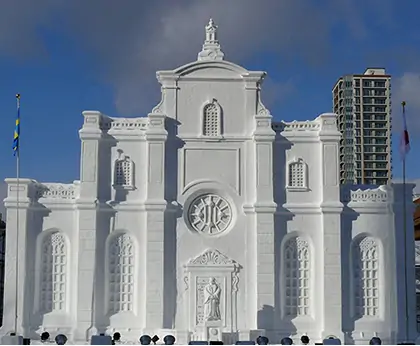 Large snow sculpture of Stockholm Cathedral, Sweden © HBC
Hokkaido Broadcasting Co.
Large snow sculpture of Stockholm Cathedral, Sweden © HBC
Hokkaido Broadcasting Co.
QR payment service for Chinese tourists are introduced in some stores.
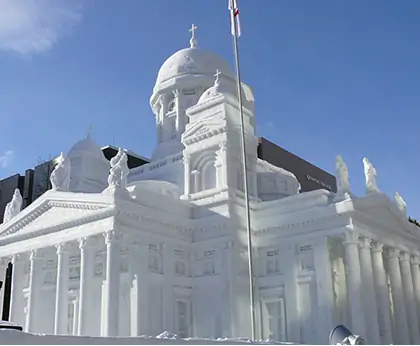 2019 Sapporo Snow Festival, Helsinki Cathedral, large snow
sculpture © HBC Hokkaido Broadcasting.
2019 Sapporo Snow Festival, Helsinki Cathedral, large snow
sculpture © HBC Hokkaido Broadcasting.
As a project to commemorate the 70th anniversary, a new type of snow festival was held, combining digital technology. There was also a project to support the Eastern Japan Earthquake, as well as a snow sculpture of Hoteisama (God of Cleverness) that recreates the origin of the snow festival.
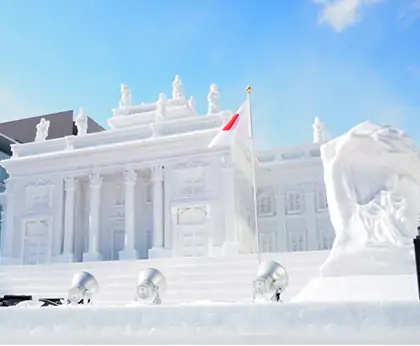 Royal Palace and Chopin sculpture in Lazienki Park HBC
Poland Square ⒸHokkaido Broadcasting 2020
Royal Palace and Chopin sculpture in Lazienki Park HBC
Poland Square ⒸHokkaido Broadcasting 2020
Due to the record shortage of snow, snow had to be brought
in to the city from the foot of Mt. Yotei and the Sorachi
region.
Introduced cloud translation equipment and web service
chatbots in the venue.
Download Brochure
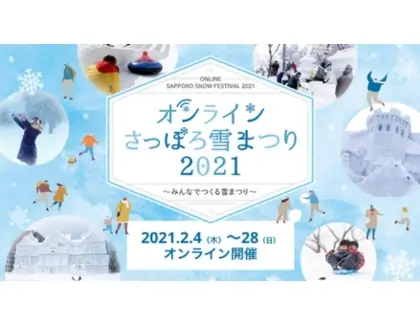
Due to the impact of the ongoing coronavirus pandemic, the
event was unfortunately not held at a venue.
The festivities were moved to an online format, aptly named
the "Online Sapporo Snow Festival 2021 - A Fair Created by
Everyone".
Online Sapporo Snow Festival 2021 special site.
2022 marks the 50th anniversary of the sister city
affiliation between Sapporo and Munich!
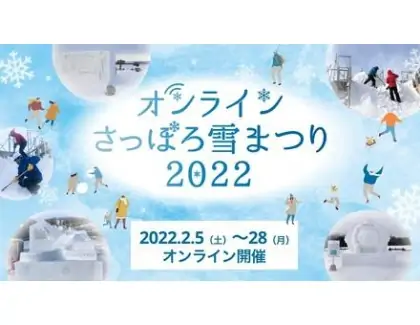
As with last year, after considering the spread of the
coronavirus, the event will not be held at a venue, but
instead, moved to an online format without live
spectators.
The "Online Sapporo Snow Festival 2022" was implemented with
various net-specific content, such as citizen-participation
projects and streamed events.
Online Sapporo Snow Festival 2022 special site.
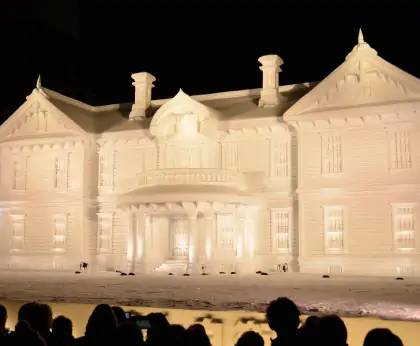
The official Snow Festival website has been updated.
This is the first time in three years that the event was
held with basic COVID-19 control measures in place.
The following events and services were not implemented due
to the infection situation.
・Tsudome Site
・International Snow Sculpture Contest
・Food and beverage booths
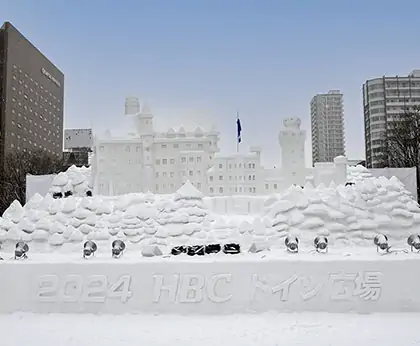
International Snow Sculpture Contest and Tsudome site
reopened for the first time in four years.
Crowded with visitors on the same scale as pre-pandemic
levels.
Odori 2-chome site became one of the venues for Sapporo
International Art Festival 2024 ,and artworks were
exhibited.
©The Sapporo Snow Festival Executive Committee
Copyright of the contents of this website (including photographs)
belongs to the Sapporo Snow Festival Executive Committee and each
right holder.
Unauthorized reproduction, duplication, broadcasting, publication,
etc. is strictly prohibited.